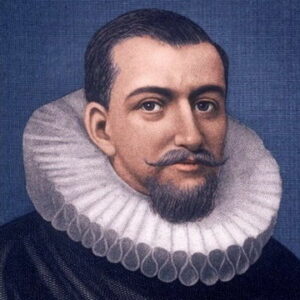Francisco Vazquez de Coronado, a Spanish conquistador, was among the first Europeans to discover the Grand Canyon and numerous other significant features. As an explorer, he undertook numerous excursions to distant regions in the hopes of discovering the legendary Seven Cities of Gold. While searching for the legendary cities of gold, he discovered some significant physical locations in the American Southwest, while never finding the treasures he sought. In Salamanca, Spain, he was born into a wealthy aristocratic family and experienced a luxurious upbringing. As a young man, he traveled to New Spain, where he gained the backing of the viceroy of Mexico, Antonio de Mendoza. He quickly obtained a position in the administration and wed the daughter of a renowned and influential guy. When he heard reports of a distant land north of Mexico that was wealthy in gold and treasure, he eventually settled into a life of power and prosperity. He himself set out on an expedition to discover these territories. His team became the first Europeans to see the Grand Canyon throughout the course of his extended travels. In what is now Texas, Oklahoma, and Kansas, they resumed their search for the Seven Cities of Gold. However, the expedition was unable to locate the treasures they sought and returned home dejected.
Youth and Early Life
Circa 1510, Francisco Vazquez de Coronado was born into a noble family in Salamanca, Spain. He was the second son of Juan Vázquez de Coronado y Sosa de Ulloa and Isabel de Luján. His father had several roles in the government.
A Later Life
Coronado traveled to New Spain (present-day Mexico) in 1535, when he was 25 years old, with the assistance of his friend Antonio de Mendoza, the first viceroy of New Spain.
During his time in New Spain, he married the daughter of the colonial treasurer and secured a government position.
Eventually, he ascended through the ranks and was chosen in 1538 as the Governor of the New Galicia province of New Spain, which was located northwest of Mexico.
In the 1530s, it was widely believed that towns rich in gold and valuable stones existed to the north of Mexico. In 1539, Coronado ordered Friar Marcos de Niza and Estevanico on an expedition to determine whether or not these stories were true.
Only de Niza survived the trip, and he told the governor about Cibola, a golden city whose inhabitants were believed to have murdered Estevanico. De Niza mentioned that the golden city was extremely prosperous and situated on a hill.
Coronado began organizing an expedition to search the riches when he learned of the existence of such a magnificent location. Together with Viceroy Antonio de Mendoza, he used his own funds to bankroll the expedition’s search for the legendary Seven Cities of Gold.
In February 1540, Coronado left Compostela with approximately 300 Spanish soldiers and between 1,000 and 2,000 Mexican Indians. They traveled up Mexico’s west coast to Culiacán. They eventually arrived at the Sinaloa River, which they followed until it led to the Yaqui River.
Following their journey through the Yaqui River, the explorers crossed the Rio Sonora. Further travels took them to a location that may have been present-day Santa Cruz or San Pedro. The group finally reached Cibola after months of traveling through mountains and forests.
However, Cibola was nothing like what Coronado had imagined; it was merely a Zuni Indian settlement of small pueblos. In the meantime, a side expedition commanded by Garcia López de Cárdenas likewise failed to uncover riches, despite becoming the first Europeans to observe the Colorado River’s Grand Canyon (in modern Arizona).
Coronado then continued his hunt for the apparently prosperous Quivira region. Now disillusioned, he turned back the majority of his soldiers and took with him only approximately 30 horsemen. The search for Quivira came to an end when the soldiers recognized that the legendary region was only a semi-nomadic Indian settlement. Coronado returned to Mexico dejected in 1542 and resumed his position as governor of Nueva Galicia.
He served as governor until 1544. During an investigation into the unsuccessful expedition, he was charged with many felonies linked to his conduct, including dereliction of duty, and subsequently declared bankrupt. He was ultimately cleared of all charges.
His Major Opera
Between 1540 and 1542, the journey headed by Francisco Vazquez de Coronado from Mexico to present-day Kansas was the first European expedition to see the Grand Canyon and the Colorado River. Even though the expedition failed to locate the gold-rich cities it sought, it was historically significant.
Personal History and Legacy
He married Beatriz de Estrada, the daughter of Treasurer and Governor Alonso de Estrada y Hidalgo, Lord of Picón, and his wife Marina Flores Gutiérrez de la Caballería. The couple produced eight offspring.
Infectious sickness claimed the life of Francisco Vazquez de Coronado on September 22, 1554, in New Mexico.
To honor his mission, the United States erected Coronado National Memorial near Sierra Vista, Arizona in 1952.
In Phoenix, Arizona, the Coronado Road was named for him.
Estimated Net Worth
Francisco is one of the wealthiest and most popular television show hosts. According to our investigation, Wikipedia, Forbes, and Business Insider, Francisco Vasquez has an estimated net worth of $1.5 million.


